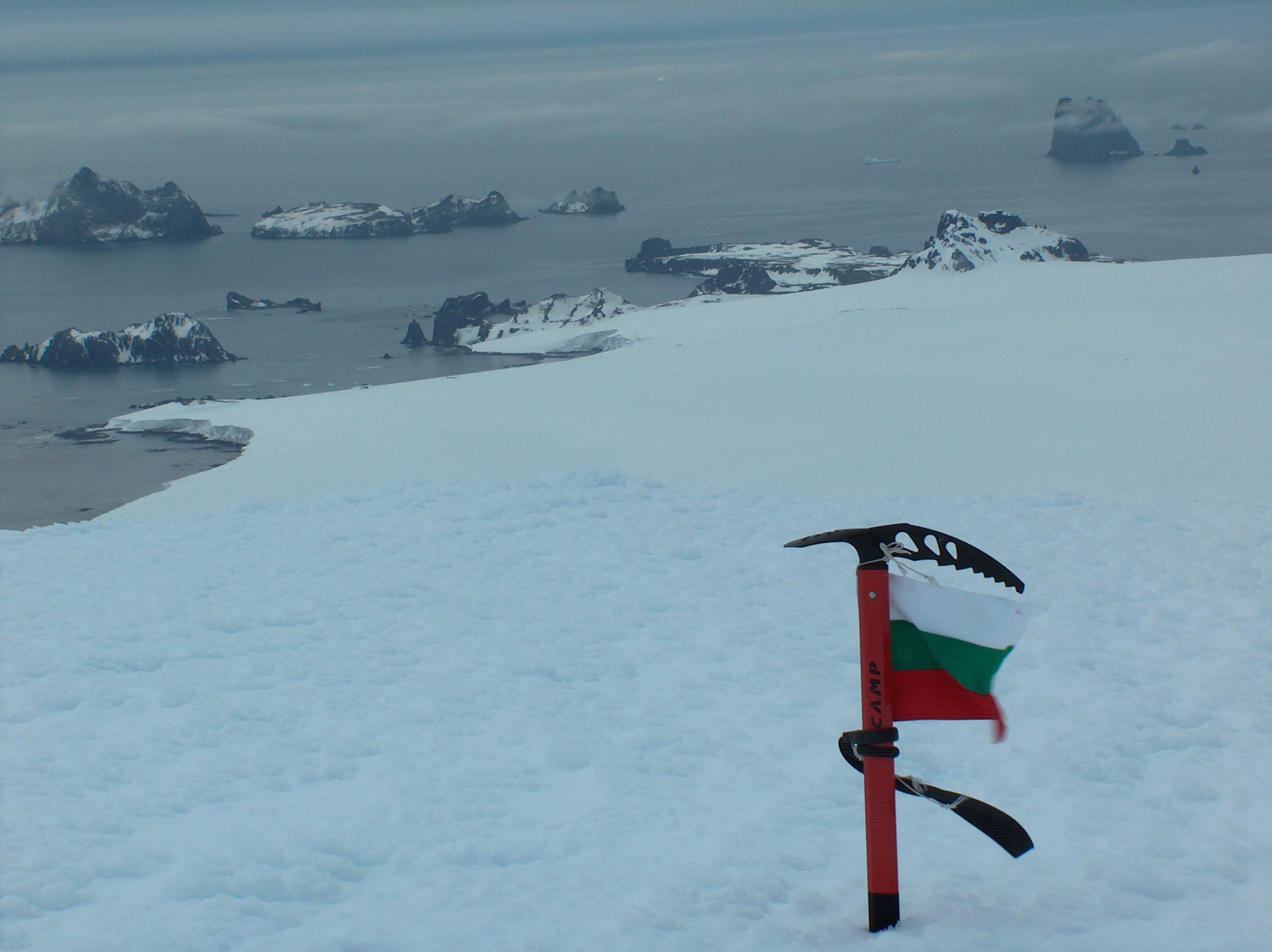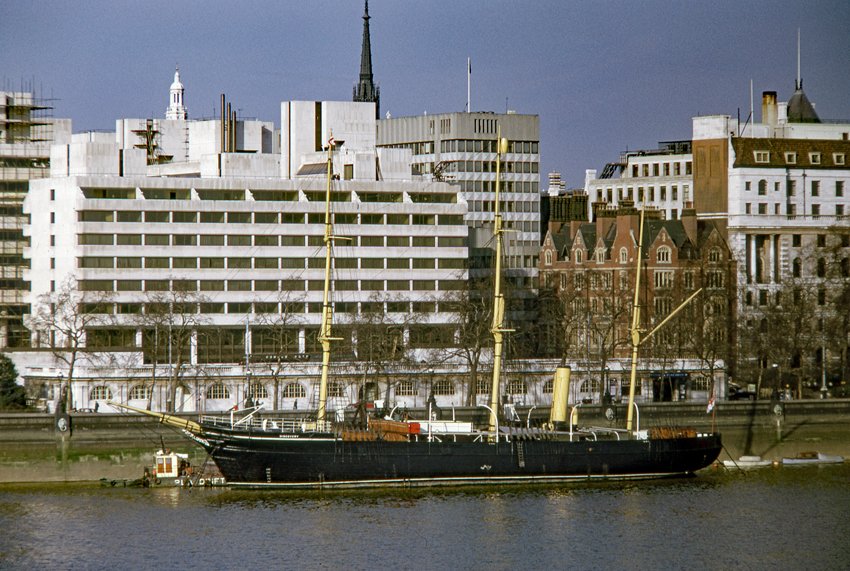|
Stenhouse Bluff
Stenhouse Bluff () is a southern face of a rocky knoll at the head of Visca Anchorage, Admiralty Bay, on King George Island in the South Shetland Islands. First charted by the French Antarctic Expedition, 1908–10, under Charcot. Named for Commander Joseph Stenhouse, Royal Navy Reserve, captain of the RRS Discovery RRS ''Discovery'' is a barque, barque-rigged steamship, auxiliary steamship built in Dundee, Scotland for Antarctic research. Launched in 1901, she was the last traditional wooden three-masted ship to be built in the United Kingdom. Her first m ... in these waters in 1927. See also * O'Connors Rock Landforms of King George Island (South Shetland Islands) Cliffs of the South Shetland Islands {{KingGeorgeIslandAQ-geo-stub ... [...More Info...] [...Related Items...] OR: [Wikipedia] [Google] [Baidu] |
Visca Anchorage
Martel Inlet () is an inlet forming the northeast head of Admiralty Bay, King George Island, in the South Shetland Islands off Antarctica. The inlet and most of its constituent features were charted in December 1909 by the Fourth French Antarctic Expedition under Jean-Baptiste Charcot and named "Fiord Martel" after J.L. Martel, a French politician. The mountain ridge Ullmann Spur is located at the head of the inlet. Visca Anchorage is the northwestern cove of Martel Inlet. It was named by Charcot for an acquaintance in Montevideo. Within the cove is Sea Leopard Patch, a shoal with a least depth of . It was charted in 1927 by Discovery Investigations personnel on the Discovery and named after the leopard seal, ''Hydrurga leptonyx The leopard seal (''Hydrurga leptonyx''), also referred to as the sea leopard, is the second largest species of seal in the Antarctic (after the southern elephant seal). It is a top order predator, feeding on a wide range of prey including cepha ...' ... [...More Info...] [...Related Items...] OR: [Wikipedia] [Google] [Baidu] |
Admiralty Bay (South Shetland Islands)
Admiralty Bay is an irregular bay, wide at its entrance between Demay Point and Martins Head, indenting the southern coast of King George Island for , in the South Shetland Islands of Antarctica. The name appears on a map of 1822 by Captain George Powell, a British sailor, and is now established in international usage. The Henryk Arctowski Polish Antarctic Station is situated on the bay, as is the Comandante Ferraz Brazilian Antarctic Base. It has been designated an Antarctic Specially Managed Area (ASMA 1). Description The bay has three fjords: Martel, Mackellar, and Ezcurra. A mariner's guide to the region pronounced the bay to have the best anchorage of any in the South Shetlands, "being well-sheltered all around and having moderate depths over a bottom of good, stiff clay. Ice from the glaciers is frequently troublesome." Chilean scientists have claimed that Amerinds visited the area, due to stone artifacts recovered from bottom-sampling operations in the bay. ... [...More Info...] [...Related Items...] OR: [Wikipedia] [Google] [Baidu] |
King George Island (Antarctica)
King George Island ( Argentinian Spanish: Isla 25 de Mayo, Chilean Spanish: Isla Rey Jorge, Russian: Ватерло́о Vaterloo) is the largest of the South Shetland Islands, lying off the coast of Antarctica in the Southern Ocean. The island was named after King George III. Geography King George island has three major bays, Maxwell Bay, Admiralty Bay, and King George Bay. Admiralty Bay contains three fjords, and is protected as an Antarctic Specially Managed Area under the Protocol on Environmental Protection to the Antarctic Treaty. The Fildes Peninsula, long, forms the SW extremity of the island. It was named from association with nearby Fildes Strait by the UK-APC in 1960. History Chilean scientists have claimed that Amerinds visited the area, citing stone artifacts recovered from bottom-sampling operations in Admiralty Bay; however, the artifacts—two arrowheads—were later found to have been planted. The island was first claimed for Britain on 16 Oct ... [...More Info...] [...Related Items...] OR: [Wikipedia] [Google] [Baidu] |
South Shetland Islands
The South Shetland Islands are a group of List of Antarctic and subantarctic islands, Antarctic islands located in the Drake Passage with a total area of . They lie about north of the Antarctic Peninsula, and between southwest of the nearest point of the South Orkney Islands. By the Antarctic Treaty System, Antarctic Treaty of 1959, the islands' sovereignty is neither recognized nor disputed by the signatories. According to British government language on the topic, "the whole of Antarctica is protected in the interests of peace and science." The islands have been claimed by three countries, beginning with the United Kingdom since 1908 (since 1962 as part of the equally unrecognized British Antarctic Territory). The islands are also claimed by the governments of Chile (since 1940, as part of the Antártica Chilena province), and by Argentina (since 1943, as part of Argentine Antarctica, Tierra del Fuego Province, Argentina, Tierra del Fuego Province). Several countries ... [...More Info...] [...Related Items...] OR: [Wikipedia] [Google] [Baidu] |
French Antarctic Expedition
The French Antarctic Expedition is any of several French expeditions in Antarctica. 1837–1840 In 1837, during an 1837–1840 expedition across the deep southern hemisphere, Captain Jules Dumont d'Urville sailed his ship ''Astrolabe'' along a coastal area of Antarctica which he later named Adélie Land, in honor of his wife. During the Antarctic part of this expedition, Dumont d'Urville team performed the first experiments to determine the approximate position of the South magnetic pole, and landed on Débarquement Rock in the Géologie Archipelago, () just 4 km from the mainland, where he took mineral and animal samples. On his return to France in 1840 he was made rear admiral. 1904–1907 Jean-Baptiste Charcot was appointed leader of a 1904–1907 French Antarctic Expedition, aboard the ship ''Français'', exploring the west coast of Graham Land portion of the Antarctic Peninsula. The expedition reached Adelaide Island in 1905 and took pictures of the Pal ... [...More Info...] [...Related Items...] OR: [Wikipedia] [Google] [Baidu] |
Joseph Stenhouse
Commander Joseph Russell Stenhouse, DSO, OBE, DSC, RD, RNR (1887–1941) was a Scottish-born seaman, Royal Navy Officer and Antarctic navigator, who commanded the expedition vessel during her 283-day drift in the ice while on service with the Ross Sea Party component of Sir Ernest Shackleton's Imperial Trans-Antarctic Expedition in 1914–17. After ''Aurora''s escape from the ice he brought her safely to New Zealand, but was thereafter replaced as the vessel's commander. He later served with distinction in the Royal Navy during both World Wars. Early life He was born in Dumbarton, Scotland, into a prosperous shipbuilding family, and was educated in England at Barrow Grammar School. After a short spell as a junior clerk with Lloyd's Register of Shipping, he served a Merchant Officer's apprenticeship on tall ships rounding Cape Horn. He then joined the British India Steam Navigation Company before receiving a last-minute appointment as First Officer on the ''Aurora'', which ... [...More Info...] [...Related Items...] OR: [Wikipedia] [Google] [Baidu] |
Royal Navy Reserve
The Royal Naval Reserve (RNR) is one of the two volunteer reserve forces of the Royal Navy in the United Kingdom. Together with the Royal Marines Reserve, they form the Maritime Reserve. The present RNR was formed by merging the original Royal Naval Reserve, created in 1859, and the Royal Naval Volunteer Reserve (RNVR), created in 1903. The Royal Naval Reserve has seen action in World War I, World War II, the Iraq War and the War in Afghanistan. History Establishment The Royal Naval Reserve (RNR) has its origins in the Register of Seamen, established in 1835 to identify men for naval service in the event of war, although just 400 volunteered for duty in the Crimean War in 1854 out of 250,000 on the Register. This led to a Royal Commission on Manning the Navy in 1858 and 1859, which in turn led to the Naval Reserve Act 1859. This established the RNR as a reserve of professional seamen from the British Merchant Navy and fishing fleets, who could be called upon during tim ... [...More Info...] [...Related Items...] OR: [Wikipedia] [Google] [Baidu] |
RRS Discovery
RRS ''Discovery'' is a barque, barque-rigged steamship, auxiliary steamship built in Dundee, Scotland for Antarctic research. Launched in 1901, she was the last traditional wooden three-masted ship to be built in the United Kingdom. Her first mission was the British National Antarctic Expedition, carrying Robert Falcon Scott and Ernest Shackleton on their first, and highly successful, journey to the Antarctic, known as the Discovery Expedition, ''Discovery'' Expedition. After service as a merchant ship before and during the First World War, ''Discovery'' was taken into the service of the Government of the United Kingdom, British government in 1923 to carry out scientific research in the Southern Ocean, becoming the first Royal Research Ship. The ship undertook a two-year expedition – the Discovery Investigations – recording valuable information on the oceans, marine life and being the first scientific investigation into whale populations. From 1929 to 1931 ''Discovery'' serv ... [...More Info...] [...Related Items...] OR: [Wikipedia] [Google] [Baidu] |
O'Connors Rock
O'Connors Rock () is a rock 0.1 nautical miles (0.2 km) southwest of Stenhouse Bluff, King George Island, lying in Visca Anchorage in the north part of Admiralty Bay, in the South Shetland Islands. First charted by the French Antarctic Expedition, 1908–10, under Charcot. The name "O'Connor's Rock" was first used for this feature on a British chart and is probably after Midshipman W. P. O'Connor, Royal Navy Reserve The Royal Naval Reserve (RNR) is one of the two volunteer reserve forces of the Royal Navy in the United Kingdom. Together with the Royal Marines Reserve, they form the Maritime Reserve. The present RNR was formed by merging the original R ..., who assisted in a sketch survey of Visca Anchorage in the Discovery in 1927. Rock formations of King George Island (South Shetland Islands) {{KingGeorgeIslandAQ-geo-stub ... [...More Info...] [...Related Items...] OR: [Wikipedia] [Google] [Baidu] |
Landforms Of King George Island (South Shetland Islands)
A landform is a land feature on the solid surface of the Earth or other planetary body. They may be natural or may be anthropogenic (caused or influenced by human activity). Landforms together make up a given terrain, and their arrangement in the landscape is known as topography. Landforms include hills, mountains, canyons, and valleys, as well as shoreline features such as bays, peninsulas, and seas, including submerged features such as mid-ocean ridges, volcanoes, and the great oceanic basins. Physical characteristics Landforms are categorized by characteristic physical attributes such as elevation, slope, orientation, structure stratification, rock exposure, and soil type. Gross physical features or landforms include intuitive elements such as berms, cliffs, hills, mounds, peninsulas, ridges, rivers, valleys, volcanoes, and numerous other structural and size-scaled (e.g. ponds vs. lakes, hills vs. mountains) elements including various kinds of inland and oceanic waterbodi ... [...More Info...] [...Related Items...] OR: [Wikipedia] [Google] [Baidu] |




